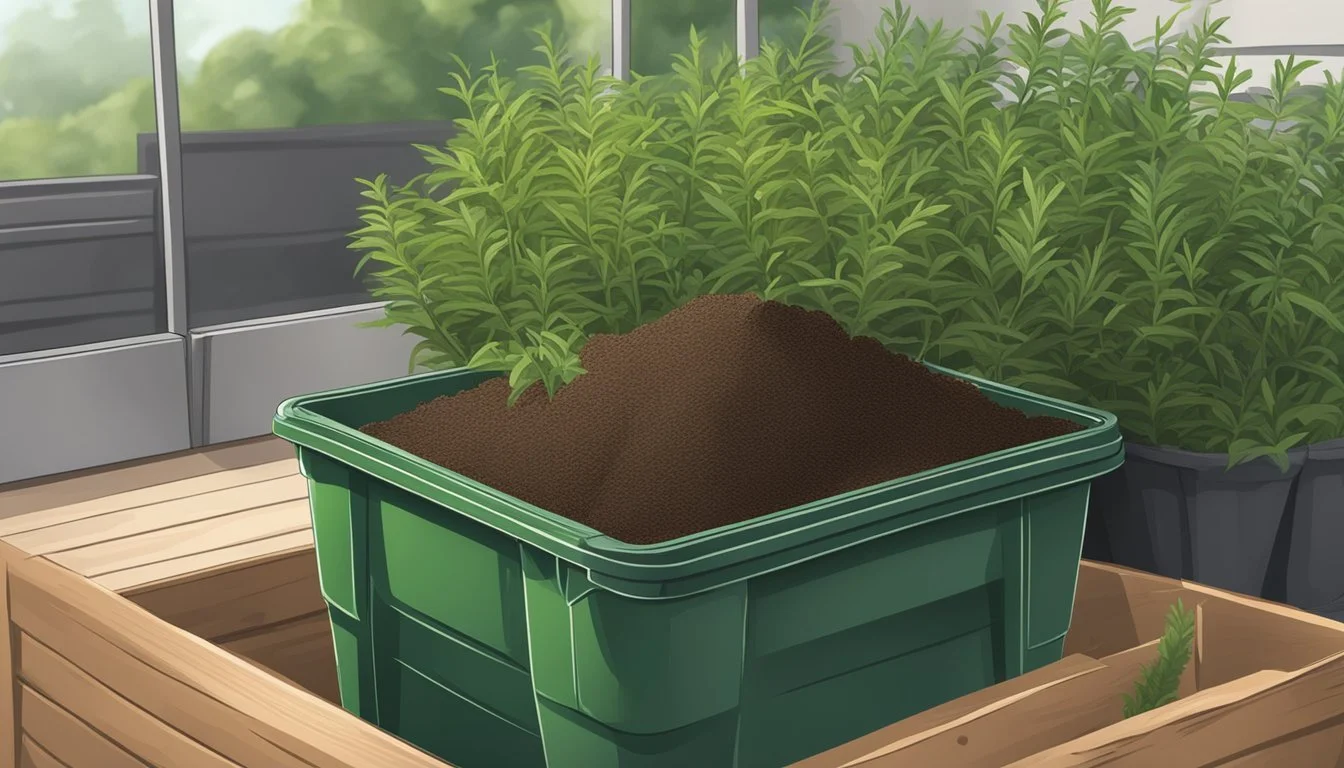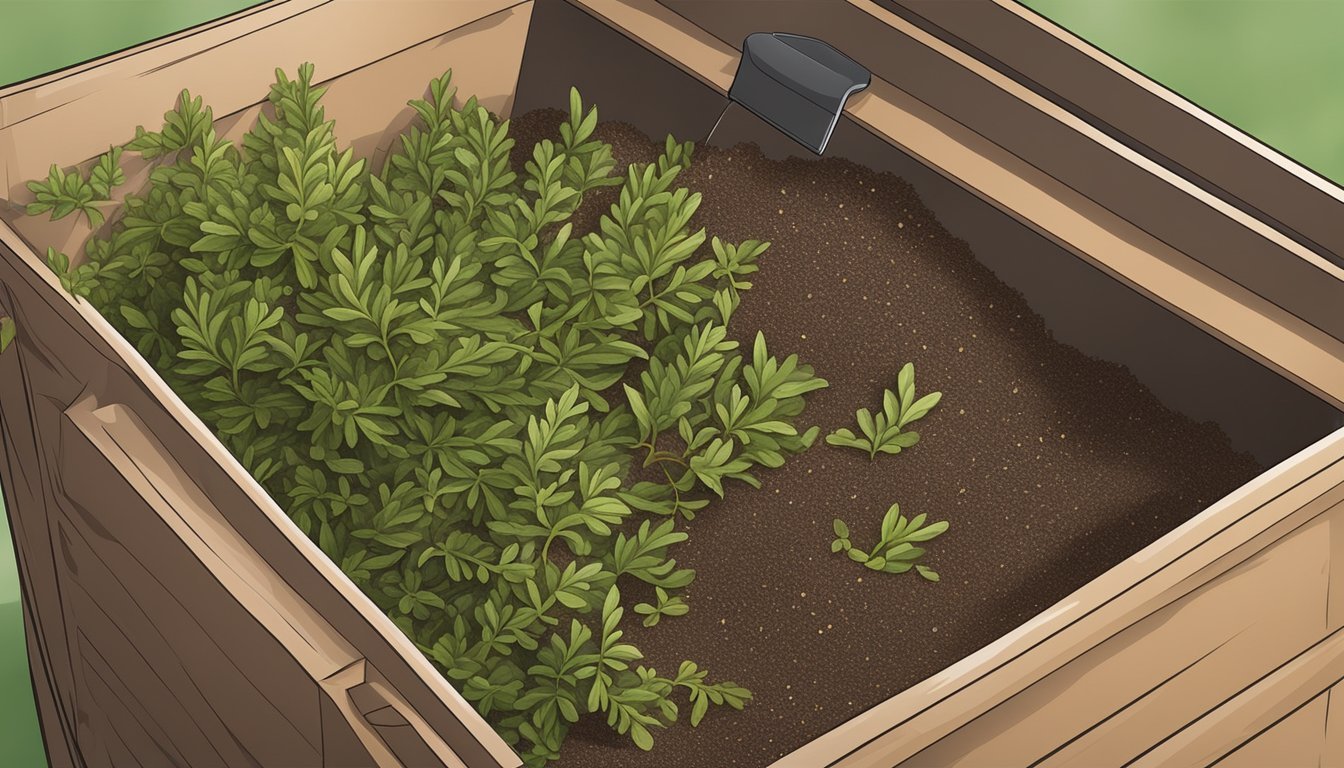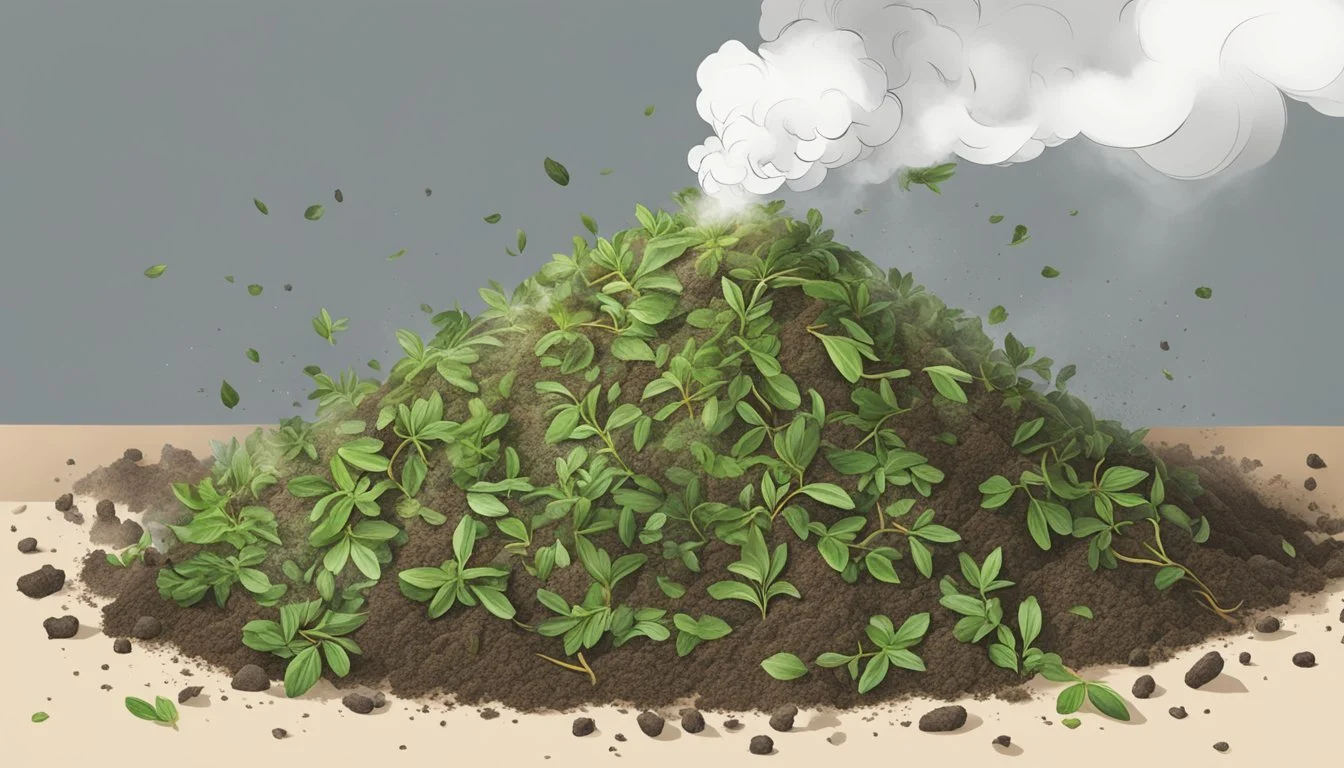Can You Compost Yew Clippings?
Understanding the Risks and Guidelines
Composting is a process widely used to transform organic waste into a nutrient-rich soil amendment. In the context of yew clippings, which are the trimmings from yew trees commonly utilized in landscaping, the consideration for composting them brings forth the question of safety due to the plant's known toxicity. Yew contains potent compounds that can be harmful to humans and animals, which raises concerns about whether these toxins can be broken down during composting or if they might persist in the resulting compost and pose a risk to the garden environment where it might be applied.
The composting process involves microbial activity that breaks down organic matter into simpler substances, ideally rendering it harmless and beneficial to soil health. While some assert that yew clippings can be composted safely, the importance of ensuring that the composting process is complete and thorough is emphasized. It is crucial to determine whether the toxic compounds in yew have been adequately neutralized before the compost is used around other plants, as residual toxicity could affect the health of the garden ecosystem.
To mitigate the risks while taking advantage of the potential benefits of yew in compost, alternative uses for yew clippings are also considered. Applying incompletely composted yew materials as a mulch for non-edible plants or on pathways may provide a safer option, preventing direct contact with the soil in vegetable garden beds or places where pets and children might access it. With careful handling and specific application strategies, it is possible to integrate yew clippings into a garden managing plan that respects both the plant's properties and the gardener's safety.
Understanding Compost Basics
Before diving into the specifics of composting yew clippings, it's crucial to understand the fundamentals of composting. This involves recognizing the key components involved, the process by which composting occurs, and the benefits it holds for soil and the environment.
Components of Compost
Compost is made up of three fundamental components that create an ideal environment for decomposition:
"Browns": These items are rich in carbon and include materials such as dry leaves, straw, paper, and wood chips. They provide the necessary energy for microorganisms.
"Greens": Comprising of nitrogen-rich materials like food scraps, grass clippings, and coffee grounds, the "greens" supply proteins and amino acids required for microorganisms to grow and multiply.
Water: Maintaining an appropriate moisture level is critical. The materials should feel like a wrung-out sponge – moist but not sopping wet, facilitating microorganism survival and activity.
The Composting Process
The transformation from raw organic materials into nutrient-rich compost involves several critical factors:
Decomposition: The central process where microorganisms break down organic matter.
Soil Quality: Optimal conditions of moisture, temperature, and aeration are necessary to foster a thriving microbial ecosystem.
Temperature: As microorganisms work, they generate heat, which helps to break down the materials faster.
Air: Regular turning of the compost pile introduces oxygen, which is vital for aerobic bacteria to effectively decompose the materials.
Benefits of Compost
Using compost has numerous advantages, both for landscape applications and the broader environment:
Soil Quality: Compost enriches soil, adding essential nutrients and improving soil structure, which enhances root growth and water retention.
Environment: It helps to reduce landfill waste by recycling organic materials back into the soil, and it mitigates the greenhouse effect by sequestering carbon.
Landscaping: For gardeners, compost is a boon as it serves as a potent, natural fertilizer that supports plant health without the need for chemical additives.
Yew Clippings and Composting
When it comes to garden waste, not all materials are equal for the compost bin. Yew clippings are a special case due to their toxic properties, requiring gardeners to exercise caution.
Properties of Yew Clippings
Yew trees, recognized for their evergreen foliage and red arils surrounding their seeds, contain potent compounds such as taxine and taxanes. These substances are found throughout the plant, with the exception of the fleshy aril. Yew clippings, which consist of the tree's needles and branches, inherit these toxic properties.
Risks of Composting Yew
The toxicity of yew poses a substantial risk when it comes to composting. If ingested, these poisonous compounds can be harmful to humans and animals, especially grazing livestock which might have access to the plants. Additionally, the potent chemicals may not break down sufficiently in a composting environment, potentially contaminating the resulting mulch. Use of such mulch may inadvertently introduce toxins into areas where food is grown or children and pets play.
Potential Risks:
Ingestion by humans or animals
Contamination of compost used for food crops
Persistence of toxic substances in the environment
Safe Handling of Yew Waste
Proper disposal of yew waste is crucial. It's advised to entirely avoid adding yew clippings to the compost heap. Instead, these clippings should be bagged and disposed of through a hazardous waste facility to ensure safe handling and prevent contamination. Some recycling programs may accept yew as a special category of green waste. Check local guidelines for disposal of potentially toxic garden waste like yew clippings.
Disposal Methods:
Contact a hazardous waste facility
Follow local recycling or landfill policies for garden waste
Exercise caution to avoid contamination
Alternative Approaches
When dealing with yew clippings, traditional composting may not be suitable due to the plant's toxic properties. However, there are alternative methods and uses for these clippings that can be both safe and beneficial.
Composting Alternatives for Yew Clippings
Yew clippings are known for their toxicity, which makes them unsuitable for standard compost piles. However, mulching is a viable alternative. Gardeners can use these clippings as a protective layer for paths or beneath established trees and bushes where they are less likely to be disturbed by humans or animals. This not only recycles the clippings but also benefits the landscape by suppressing weeds and conserving soil moisture.
Creative Uses for Yew Clippings
Aside from mulching, yew clippings have several alternative uses. Their durability and texture make them great for crafts, where they can be transformed into wreaths or decorations. Moreover, some organizations seek out yew clippings for pharmaceutical purposes, as certain compounds in the clippings are valuable for cancer treatment drugs. These clippings, when donated, support crucial medical research and applications.
Building A Proper Compost Pile
When constructing a compost pile, proper layering, management of components, and adherence to best practices are crucial for creating effective soil amendments.
Layering Your Compost
Building a compost pile involves a balance of brown and green waste to ensure optimal decomposition. Brown waste provides carbon and includes materials like dry leaves, newspaper, and cardboard. Green waste supplies nitrogen and encompasses lawn clippings and kitchen scraps, yet excluding meat and dairy products. A well-mixed compost should maintain a ratio of approximately 2/3 brown to 1/3 green materials. Layering these materials helps maintain a mixture that supports microbial activity and speeds decomposition.
Managing Compost Components
For a compost heap to decompose effectively, both moisture and air are necessary. The pile should remain moist but not waterlogged to support microbe activity. Additionally, turning the pile periodically introduces air into the mix, which helps maintain the right temperature for composting and prevents material from becoming too compacted. Turning also redistributes moisture and different materials, ensuring an even decomposition process.
Composting Best Practices
Selecting the right location for a compost heap is a foundational step—it should be in a well-drained area with partial sunlight to help with temperature regulation. The pile should not be in direct contact with structures to avoid attracting pests. A compost pile benefits from having a cover, such as tarpaulin, to manage moisture levels and protect from heavy rain or excessive drying. Maintaining a balance of components and regular monitoring will yield rich mulch suitable for soil amendment.
Maintaining a Healthy Compost Environment
In composting, it's crucial to consistently foster conditions that encourage decomposition while minimizing harmful contamination. This involves regular monitoring, conscientious material selection, and careful interactions with the surrounding wildlife.
Monitoring Compost Conditions
To maintain an effective composting process, constant vigilance of key variables is essential. Temperature should be monitored to ensure it stays between 130-160°F (55-70°C), the ideal range to accelerate decomposition while killing off pathogens. Maintaining moisture is equally important; the compost should feel like a wrung-out sponge. Air circulation is necessary to supply oxygen, which is achieved by turning the contents of the compost bin regularly.
Temperature: 130-160°F (55-70°C)
Moisture: Comparable to a wrung-out sponge
Air: Turn compost regularly
Avoiding Contamination
A healthy compost bin avoids materials that can introduce toxins or diseases. This includes refraining from adding dairy and meat products, which can attract pests and cause foul odors. Similarly, garden waste treated with pesticides or herbicides should be left out to prevent chemical contamination. Never add plastic bags or other non-organic materials as they do not break down and can pollute the soil and wider environment.
Exclude:
Dairy and meat
Pesticides/herbicides-treated materials
Non-organic waste (e.g., plastic bags)
Compost and Wildlife
While composting attracts beneficial organisms, it can also draw in unwanted wildlife. Ensure the compost bin is secured against animals, which might scavenge or disrupt the pile. Use a bin with a locking lid and a wire mesh base to deter rodents. Be aware of the placement of your compost bin; keeping it away from woodland paths can further reduce the likelihood of wildlife encounters.
Secure compost bin with:
Locking lid
Wire mesh base
Placement: Away from woodland paths
Enhancing Soil With Compost
Compost plays an integral role in advancing soil quality by providing a concentrated source of organic matter and nutrients. Proper incorporation and use of compost as a soil amendment cultivates fertile, nutrient-rich soil conducive to healthy plant growth.
Incorporating Compost into Soil
Gardeners incorporate compost into soil to stimulate decomposition processes, which enriches the soil with vital nutrients. It is essential to evenly distribute compost throughout the planting area, mixing it with the top layer of soil to ensure an optimal environment for plant roots. The best practice involves:
Spreading a 2-4 inch layer of compost on the soil surface.
Tilling or digging the compost into the soil to a depth of about 6-8 inches.
By integrating compost into the soil, the enhanced texture and fertility support increased water retention and improved root penetration.
Compost as a Soil Amendment
Using compost as a soil amendment significantly boosts soil quality, making it more hospitable for plant life. Key benefits of compost as a soil amendment include:
Nutrient Balance: It contributes to a more nutrient-rich environment, supplying an array of essential minerals conducive to plant health.
Soil Structure: It helps improve soil structure, promoting better aeration and water infiltration.
As a multipurpose soil amendment, compost effectively:
Acts as a natural mulch, regulating soil temperature and moisture levels.
Provides a slow-release form of nutrients, which is less likely to cause nutrient runoff compared to synthetic fertilizers.
Gardeners seeking to improve soil quality often turn to compost for its reliability and overall contribution to creating a robust and resilient garden ecosystem.







